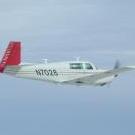insulation under avionics access panels
-
Members Online
- UteM20F
- Greg Ellis
- bluehighwayflyer
- SOLER
- Pierre07
- William A
- jtoland
- LANCECASPER
- clh
- Shadrach
- natdm
- Bartman
- PT20J
- Utah20Gflyer
- 201er
- MikeOH
- 00-Negative
- Aviationist
- Parker_Woodruff
- richardbrochu27
- StevenL757
- Jbguns24
- jlunseth
- Montreal
- redbaron1982
- ToddCC22
- TCC
- thomas1142
- slowflyin
- ResumeNormalSpeed83
- Florian Guthardt
- Ned Gravel
- Taildraggerpilot
- GeeBee
- Adverseyaw0317
- ArtVandelay
- Arthur
- Jim Peace
- Glen Davis
- Flyler
- Hector


Recommended Posts
Join the conversation
You can post now and register later. If you have an account, sign in now to post with your account.